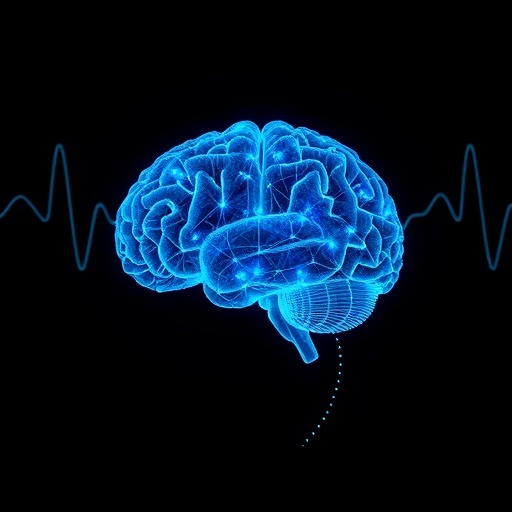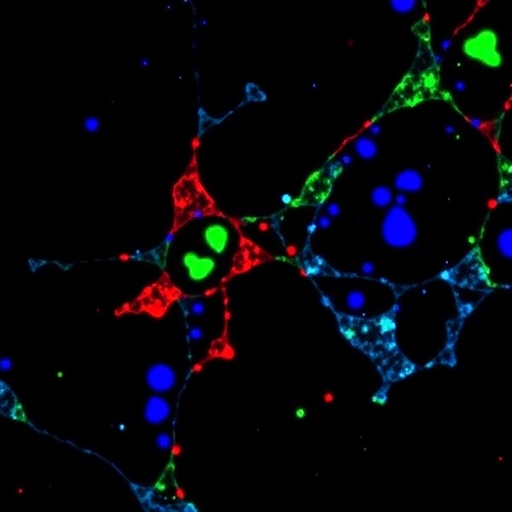In a groundbreaking advancement at the intersection of artificial intelligence and sleep medicine, a team of researchers has unveiled a novel deep learning framework that promises to revolutionize the way sleep disorders are detected and managed. Leveraging massive datasets of nocturnal respiratory signals, this innovative approach tackles longstanding disparities in sleep health outcomes and ushers in a more equitable era of diagnostic precision. This breakthrough is chronicled in a recent publication in Nature Communications and represents a significant leap forward in sleep health equity.
Sleep disorders have long plagued populations worldwide, yet their diagnosis and treatment remain deeply inequitable, often limited by access to specialized healthcare resources and subject to biases inherent in traditional diagnostic tools. Obstructive sleep apnea (OSA), a condition characterized by repeated interruptions in breathing during sleep, is one of the most common yet underdiagnosed disorders, affecting millions globally. The new research harnesses artificial intelligence to analyze respiratory signals gathered during sleep, providing a scalable and non-invasive method for identifying OSA with unprecedented accuracy across diverse populations.
Central to this innovation is the deployment of deep learning models trained on an unprecedented scale of respiratory data acquired from nocturnal environments. The respiratory signals analyzed include detailed airflow and breathing pattern metrics recorded during sleep studies, capturing subtle physiological nuances that escape human observation. The model architecture incorporates convolutional neural networks (CNNs) capable of parsing temporal and spatial features in the respiratory waveforms, enabling nuanced differentiation between normal and pathological breathing events.
This approach represents a paradigm shift from traditional polysomnography, which is time-consuming, costly, and requires specialized clinical settings. By contrast, the researchers’ deep learning model operates on respiratory signals that can be captured using more accessible, wearable, or bedside devices. This not only democratizes sleep disorder screening but also enhances scalability, allowing for broader population-level assessments, especially in resource-constrained environments where sleep medicine infrastructure is sparse.
The study’s datasets encompass respiratory recordings from tens of thousands of individuals, encompassing a wide range of demographic variables such as age, sex, ethnicity, and comorbid health conditions. This inclusive dataset addresses a critical gap in existing sleep research, which often suffers from sampling biases that compromise the generalizability of findings. The deep learning model’s robust performance across these subpopulations demonstrates its potential to mitigate diagnostic disparities and promote health equity in sleep medicine.
Comprehensive validation efforts confirmed the model’s superior accuracy, sensitivity, and specificity compared to conventional algorithms and expert clinical assessments. The authors reported high concordance with standard polysomnographic indices, such as the apnea-hypopnea index (AHI), which quantifies the severity of obstructive events per hour of sleep. Moreover, the AI algorithm could detect subtle respiratory pattern disruptions that traditional scoring often overlooks, enabling earlier and more precise detection of evolving sleep disorders.
Beyond diagnostics, the researchers envision numerous clinical and public health applications for their deep learning framework. These include continuous at-home monitoring of patients at risk for sleep apnea, integration with telemedicine platforms, and deployment in large-scale epidemiological studies to map the true burden of sleep disorders globally. By enabling more equitable access to accurate sleep health assessments, the technology holds promise for reducing the long-term morbidity and mortality associated with untreated sleep apnea.
Underlying the model’s success is a sophisticated data preprocessing pipeline that cleans and normalizes raw respiratory signals, mitigating noise artifacts and inter-device variability. This ensures consistent input quality despite sources ranging from hospital-grade polysomnographs to consumer-grade wearable sensors. Such meticulous signal conditioning is crucial for maintaining the model’s generalizability and robustness across real-world deployment scenarios.
The study also highlights the ethical imperative of addressing health disparities through AI. The researchers engaged stakeholders from marginalized communities throughout the research process to ensure that the model’s development and validation adequately reflect diverse lived experiences. This participatory approach not only enhanced model fairness but also set a new standard for inclusive innovation in digital health technologies.
From a technical perspective, the model’s architecture utilizes multi-layer feature extraction with residual connections to preserve gradient flow during training, enhancing convergence speed and preventing overfitting. Training employed state-of-the-art optimization algorithms with dynamic learning rate schedules, carefully tuned hyperparameters, and data augmentation techniques to simulate diverse respiratory morphologies. The result is a highly generalizable model capable of adapting to new datasets with minimal fine-tuning.
The researchers also explored explainability tools to render the AI’s decision-making process transparent to clinicians. Saliency maps and attention mechanisms pinpointed key segments of respiratory cycles driving the model’s classifications, facilitating clinical trust and enabling more interpretable diagnostic insights. This transparency addresses one of AI’s major barriers to clinical adoption—resistance stemming from “black box” algorithms.
Importantly, the investigative team collaborated with sleep clinicians to ensure that the AI’s outputs align with clinical workflows and decision-making heuristics. The integration of AI recommendations with human expertise optimizes diagnostic accuracy while preserving clinician oversight. This human-in-the-loop strategy is essential for adopting AI-powered tools within regulatory and ethical frameworks governing patient care.
The potential public health impact of this technology is profound. Sleep apnea is linked to numerous adverse health outcomes including cardiovascular disease, cognitive decline, metabolic disorders, and increased accident risk. Early and equitable detection enabled by this AI-driven approach could inform timely interventions that reduce these burdens, especially in underserved populations disproportionately affected by sleep disorders.
Looking forward, the team plans to expand their model to incorporate multi-modal data streams including oxygen saturation, heart rate variability, and electroencephalography (EEG) to capture richer physiological context. Integration with wearable sensor ecosystems and real-time feedback mechanisms could transform sleep disorder management into a continuous, personalized process rather than episodic assessments occurring only in clinical laboratories.
This breakthrough underscores the transformative power of combining deep learning with large-scale physiological data to tackle entrenched health inequities. By democratizing access to precise and scalable sleep diagnostics, it opens new frontiers in preventive health, patient empowerment, and the pursuit of health equity—a mission that resonates across healthcare disciplines in the digital age.
In conclusion, the rise of AI as a critical tool in sleep medicine ushers in a promising future wherein no individual’s health is compromised by barriers rooted in socioeconomic or demographic factors. This landmark study not only demonstrates a technical tour de force but also exemplifies how collaborative, equity-focused innovation can translate into tangible clinical impact, setting the stage for smarter, fairer healthcare.
Subject of Research:
Advancement of sleep health equity through AI-driven analysis of nocturnal respiratory signals to improve detection of obstructive sleep apnea.
Article Title:
Advancing sleep health equity through deep learning on large-scale nocturnal respiratory signals.
Article References:
Zhuang, Z., Xue, B., An, Q. et al. Advancing sleep health equity through deep learning on large-scale nocturnal respiratory signals. Nat Commun 16, 9334 (2025). https://doi.org/10.1038/s41467-025-64340-y
Image Credits:
AI Generated
Tags: advanced diagnostics for obstructive sleep apneaartificial intelligence in healthcaredeep learning in sleep medicineequitable access to sleep healthimproving sleep health outcomes with AIinnovative approaches to sleep health equitynocturnal respiratory signal analysisnon-invasive sleep disorder detectionprecision medicine in sleep healthrespiratory data analysis for sleep disordersscalable solutions for sleep health issuestackling disparities in sleep disorder diagnosis





